1260 Memorial Drive
Atlanta, Georgia 30316
404-458-1330
7 Ways to Blend Colored Hair with Non-Colored Clip-Ins
Mikey MoranI love to dye my hair tons of different colors, and I get bored with my hair quickly.
Therefore, I tend to dye my hair often.
I especially love adding in extensions because I can play with my look with minimal effort and I am ready to go in no time. Naturally, one of the issues I run into along with my passion for rainbow hair is blending my clip-ins with my colored hair.
We have all seen people with hair extensions with a clear marker where the leave out starts and when the extensions begin.
I think extensions, specifically clip-ins, should be seamless and leave everyone guessing whether or not that is your real hair.
That is the ultimate compliment!😍
I have researched and experimented with enough hair and hair color to be able to give you seven different ways you can blend your colored hair with non-colored clip-ins. If you want to learn how to blend different color hair extensions then this info is for you!
Get ready to slay all day and let the compliments roll in!

The Clip-Ins
First thing is first, you need good quality clip-ins. It is best to get clip-ins that match your current curl pattern.
Whether your hair is wavy, curly or straight, it will be an easier process of blending your hair if the clip-ins you have at least match your curl pattern.
Private Label has a large variety of human hair clip-ins of different curl patterns and colors that will match whatever your style.
However, if you have the means to purchase new clip-ins, you can easily purchase clip-ins that match your current hair color (unless your hair is colored a fantasy color).
Therefore, for the sake of this article, I am going to assume that you have some non-colored clip-in extensions already in your possession that you want to blend with your colored hair.

1. Heat Styling
Heat styling is the ultimate go-to for blending colored hair with naturally colored clip-in extensions.
Quick Tip: Remember to proceed with caution when using heat and colored hair extensions. Don't turn your flat iron up to 480 degrees because you can. Keep a more reasonable temperature.
You can use two different methods for blending your hair with heat.

Straight Hair Goals
Straight hair blending is the most common method for blending clip-ins.
You want to make sure you have a flat iron that can get relatively hot (without scorching your hair). Install your clip-ins according to your preference of volume.
Then begin by taking small sections of hair with each section containing some of your hair and some of the extensions.
Flat iron through with a minimum of two passes. Have your flat iron to chase a comb down each section in order to minimize that amount of passes on your hair.
By reducing the number of passes on your hair, you will decrease the risk of heat damage.
Repeat this process all over your hair for a sleek and seamless look.

Curly Hair Goals
Get curly hair goals by using a curling wand to blend your colored hair and clip-ins.
Decide which size barrel will compliment your style or mood.
Once you have your curling iron on and ready to go, you will essentially repeat the steps above by taking small sections of your hair mixed with the extensions and curling and blending them. I love this method because the colored and natural hair swirls within each curl.
For more variety and texture, try using different sized curls all over your hair for a more natural look.
How Does Hair Texture Affect Hair Color?
Fine Hair:
- Absorb the color better.
- The color is more intense.
- Needs touch-ups to maintain the color.
- It's more prone to damage from over-processing.
Coarser Hair:
- More resistant to absorbing the color.
- The color is shown vividly.
- Due to its tightly bound cuticles, the color is harder to penetrate.
- It needs more processing.

2. Braiding
Braiding is a perfect and easy way to blend your colored hair and clip-ins.
There are tons of braiding styles and techniques all over YouTube that inspire you.
Here are two of them to blend your colored hair:
Halo or Crown Braid
The beautiful part about this braiding style is that it does not have a lot of parts in the hair that may allow a clip-in track to peak through.
After you have installed your clip-ins to your preference, split your hair in half. This does not require you to part your hair, only to separate it.
Clip down one half of your hair and with the other half, starting from the back of the neck, begin braiding while adding small sections of hair at a time.
If you need to add additional hair to your braids always consider using human braiding hair.
You want the tension to be downward and a moderate length to the head. You do not want your braid too tight, because it will look forced and unnatural.
(Remember halo and crown braids are to look ethereal and effortless).
However, you are do not want your braids to be too loose, which can cause them to come undone.
Find your happy medium and braid all the way around your head until you return to the back of your neck on the other side. Secure the end with a bobby pin pinned underneath the beginning of the braid.
Your crown should have a gorgeous swirl of color that adds a bit of edge to your overall look.
French or Dutch Braids
For a super adorable way of blending your hair, look no further than to French or Dutch braids.
Again, this style does not require you to part your hair, but only to separate your hair in half. The braiding technique for both French and Dutch braids are very similar.
The only difference is that with French braids, the hair that you add will overlap over the centerpiece of hair versus Dutch braids' added hair will underlap.
With both methods, you will set one half of hair to the side and begin at the front of the head with the other side, braiding close to the scalp along the side of the head. Fasten the ends with a hair tie, bow, or a simple rubber band.
For the braiding method, it is probably best to secure your clip-ins more toward the inside of your hair rather than the edge so that your hair can look natural.

3. Updos & Ponytails
Updos are a great way to camouflage different colored hair.
My favorite styles to use are the ponytail and the Half Updo.
With the ponytail, you want to situate your clip-ins to be closer to the center of your head rather than on the edge to avoid any peek-a-boos. Brush and gather all your hair together and secure it at the back of your head with a hair tie.
The height of the ponytail is up to you. Since you are using the versatility of clip-ins, you do not have to worry about not being able to rock that Beyonce’ famous high ponytail or a low ponytail for work. Another way is the half up, half down style.
Start by adding in your clip-ins at the top of your head and split your hair in half horizontally. Put the top half in a high ponytail. Afterward, continue to add clip-in pieces underneath the part separating the updo portion of the hair.
Easy!
You are ready to go with a color combination that is fierce and flawless.

4. Set Styling
Set styling is a great option to blend your colored hair with your clip-ins.
With the variety of roller sets and flexi rods in numerous styles, sizes, and materials, the options are endless.
Unless your hair is naturally curly and your clip-ins are not (remember what we mentioned about ease earlier?), install your clip-ins and lightly spritz your hair.
Choose your roller style and size and take small sections of hair, which contains both your colored hair and the non-colored clip-in, and begin to roll the hair over the rollers.
Repeat this process all over your hair. From here, you can air dry your hair or sit underneath a hooded dryer to speed up the process. Once your hair is completely dry, carefully unroll each set. Primp and fluff each curl until your liking.
Special Note: If you do have curly hair, try using a spray that does not contain water. You should also check out our curly clip-in extensions!
That way to can use this tip without worrying about your curls reverting.

5. Twist Out
A twist out on your hair will seamlessly blend the two (or more) colors and give you bouncy curls without the heat.
This method is best for those that have curly to kinky hair along with curly or kinky clip-ins. To begin, install your clip-ins, then dampen both your hair and the clip-ins. Using your favorite leave-in conditioner and curling pudding, add them all to your hair.
Working with small to medium sections, split each section in two and begin twisting from the root to the end of the hair. Swirl the end around your finger a few times to ensure the twist is secure and will not unravel. Repeat this process all over the head.
Afterward, you can either air dry or sit underneath a hooded hair dryer. When your hair is dry, put a small amount of oil in your hands and begin carefully untwisting each twist from the end to the root. Separate, fluff and primp to desired look and volume.
Your clip-ins are now completely hidden within your voluminous hair.

6. Buns
Much like the ponytail, buns can blend your clip-ins and also add a level of sophistication to any look.
Hello, Misty Copeland!
Concentrate the majority of your clip-ins to the center back of your head. Brush and pull your hair to the back and add your favorite bun doughnut to your ponytail and secure.
Again, you have the freedom to choose the height of your bun. I love the ombre look of this style, which adds some fire to a simple and elegant look.

7. Headwraps
The last style is the handy and always trendy headwrap.
Headwraps come in a variety of sizes, styles, colors, prints, and their uses are endless.
Here are two ways to turn heads in your headwrap.
Front Wrap
This style is easy and perfect to cover up any harsh demarcation lines that may prevent your style from looking anything less than perfect.
Begin by installing your clip-ins and brushing your hair toward the back of your head. Feel free to add a bit of styling product to your hair, but only a small amount.
With a long head wrap (instead of a wide one), place the wrap underneath your hair at the base of your neck. Pull both ends up toward the front of your head and start wrapping, focusing mostly on the front part of your head. Tie the access ends in the back to secure it.
Now you have a wrap that helps conceal any areas that may not blend properly with your clip-ins. Bonus points for a wrap that has a bright and funky pattern.
You can even use a bandana and tie the ends on the top of your hair for a rad retro vibe.
Bow Down
Since head wraps and clip-ins are extremely versatile, when you put them together, you get an endless plethora of style to rock on any given occasion.
One of my favorite pairings is the ponytail and a long enough head wrap to tie a bow at the top. With my clip-ins, I style a ponytail that is in the center of the back of my head.
Then with the headwrap starting from the back, I pull the ends forward and tie a huge bow on the top of my hair.
This style is simple, carefree and perfect for those summer days when you are desperate to get all of your hair off of your neck.

You’re Flawless!
Clip-ins like the new Raw Straight Clip-Ins are absolutely perfect for changing up your hairstyle, adding length or volume.
Now that you have these amazing hairstyles in your arsenal, you never have to feel stuck when you want to blend your colored hair and non-colored clip-ins.
You are free to color your hair knowing that you have all the tools to create a hairstyle that keeps everyone guessing the double-taps endless!
I love the mismatch of colors because it gives any look a bit of edge and a DIY ombre without having to go through the trouble of actually dying your hair.
Which of these styles was your favorite?🌞
What are your go-to styles for blending your clip-ins?
Let’s keep the conversation going in the comment section so we can help each other out with flawless hair!👇🏿

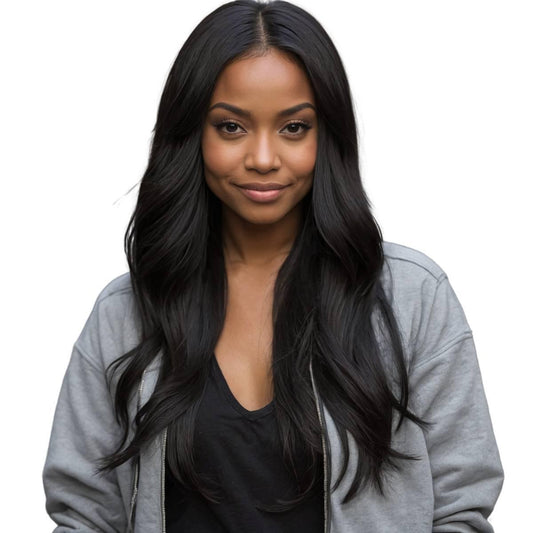
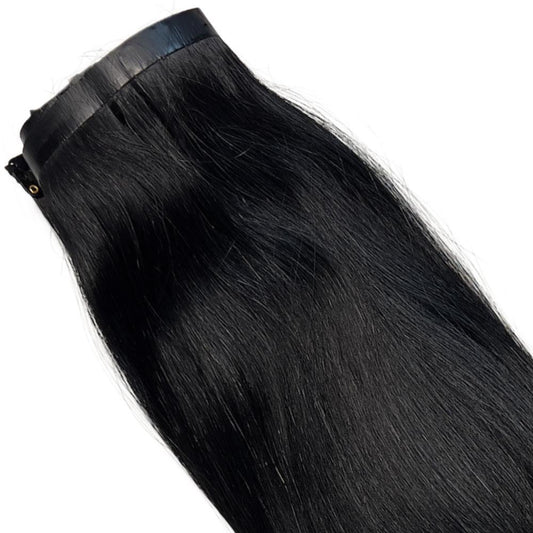
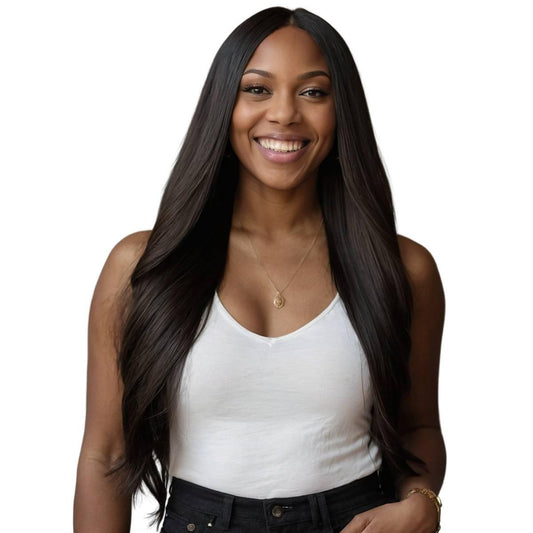
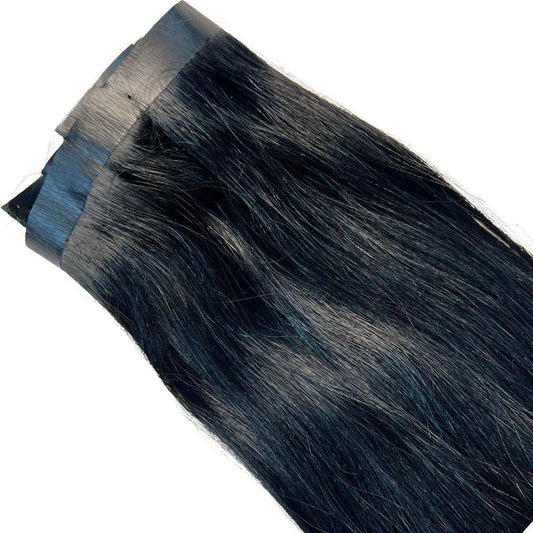
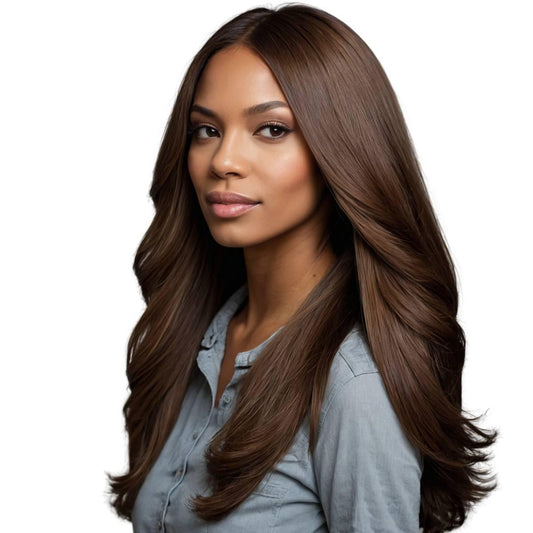
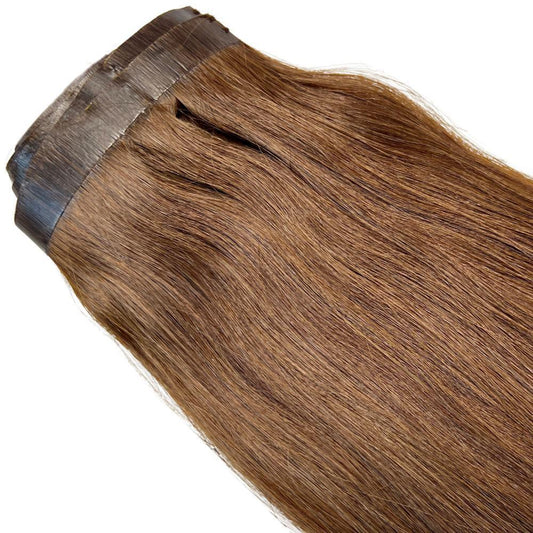
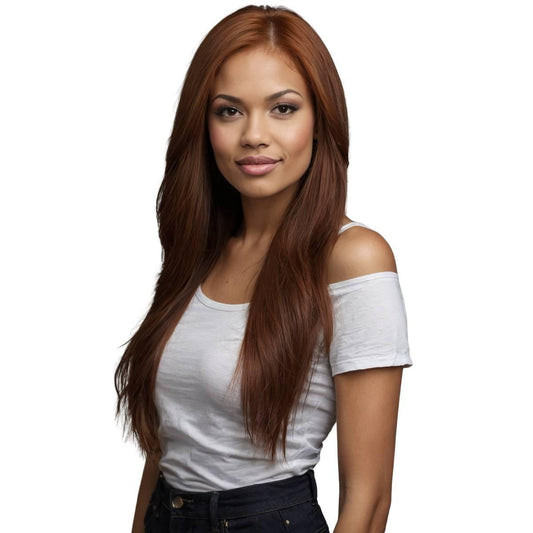
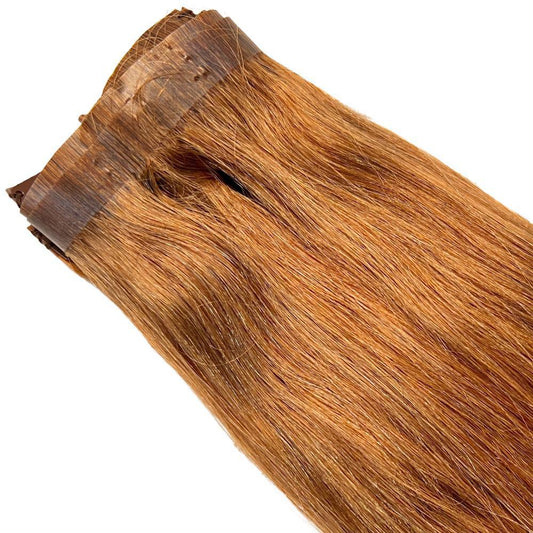
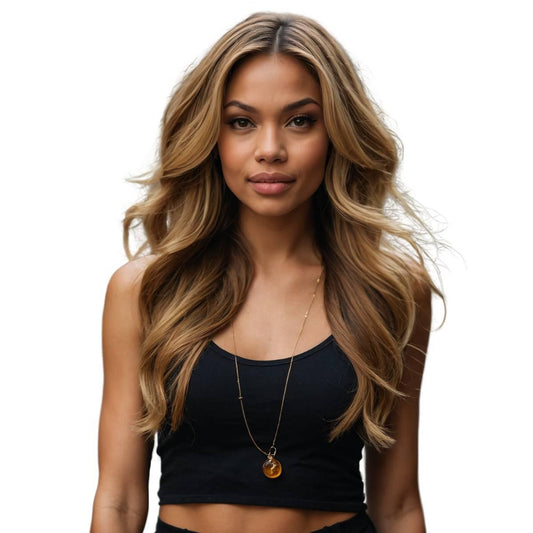
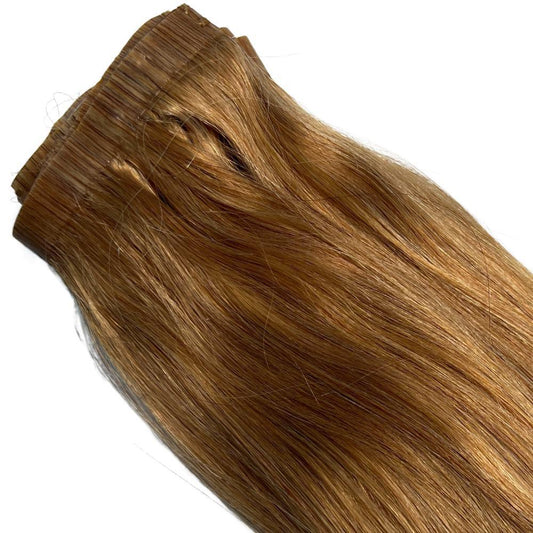
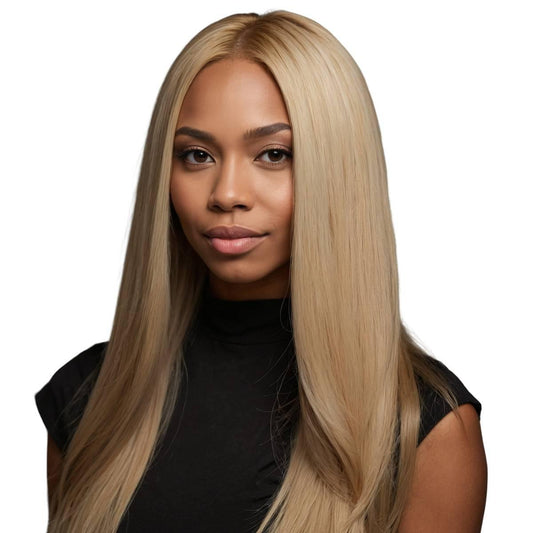
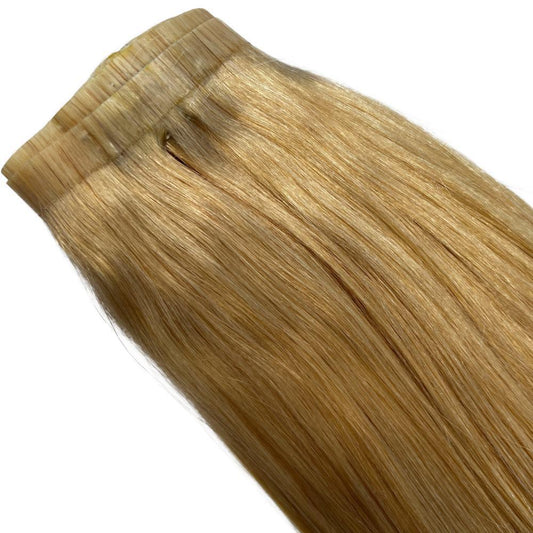
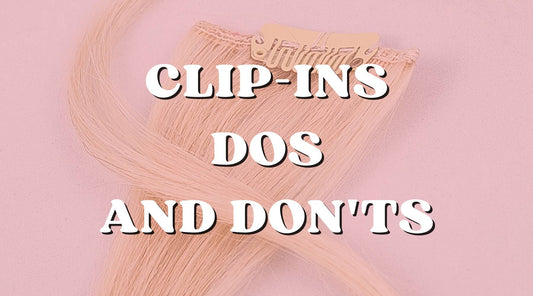
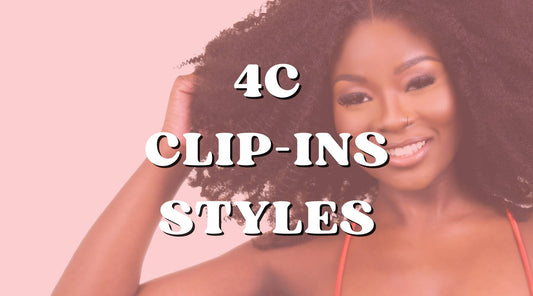
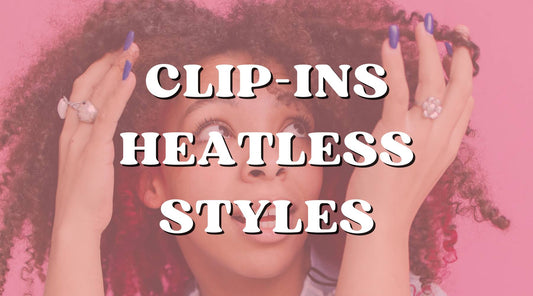
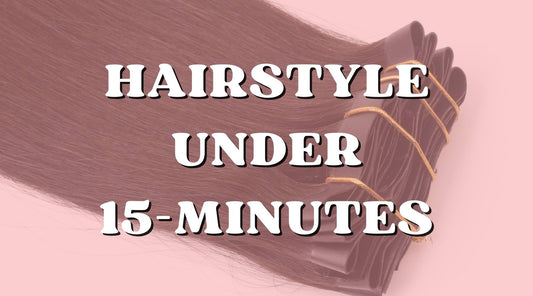
2 comments
Great tips for blending colored hair with clip-ins! I’m curious, which method works best for blending clip-ins with very different colors? Any advice?
This article is a game-changer for me! I’ve always struggled with blending my colored hair with clip-ins, but these seven methods make it sound so easy and fun. I especially love the heat styling and twist out techniques because they seem versatile and low-maintenance. Can’t wait to try these styles and rock my colored hair with confidence. Thanks for the awesome tips!